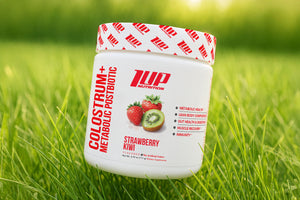Athletes dedicate countless hours of their lives to training, recovery, and nutrition with the single goal of harnessing those hours of practice into the ultimate display of power, strength, force, and athleticism at one precise moment to secure victory.
This all-out display of force and sheer athletic awesomeness is known as peaking and it is what every athlete’s training calendar is built around, be it a powerlifter looking to set a new PR or a combat athlete seeking victory in the ring or even an Olympic competitor pursuing the vaunted gold medal.
How successful (or great) your peak depends on a number of factors (training, diet, sleep, etc.), but perhaps the most important factor affecting your ability to peak at the right time is how well you structure your taper.
What is Tapering?
Tapering is defined as a planned, progressive reduction in training stress, usually from a combination of reductions in intensity, frequency, and volume.
You can think of a taper as a sort of “strategic deload” for athletes, though tapers tend to be a good deal more meticulous than just taking it easy in the gym for a week. And, tapers usually occur immediately prior to a competition, whereas deloads occur every 4-6 weeks for the average gym rat.
How Do Tapers Work?
To understand how a taper helps you to perform better, you need to understand about training stimulus and fatigue.
When we exercise, we accomplish two things:
- We improve our baseline level of fitness, and
- We induce a certain amount of fatigue in the body.
Once we recover from this fatigue and stress (it usually takes a few days), our ability to perform is increased (i.e. lift more weight for more reps, run faster, jump higher, etc.).
Now, the above example is for an isolated training bout.
When we connect multiple bouts of training over several weeks, fatigue outpaces our ability to recover, which means that performance eventually starts to fall off. However, by scaling back on training load (i.e. tapering), we allow the body to recover fully and supercompensate, whereby our new level of fitness is higher than it was at the beginning of the previous training phase.
Why Taper?
Successful tapers can lean to as much as a 6.0% increase in performance.[1] While this might not sound like much, when you get into the world of elite athletes, even 1/10th of a percent can be the difference between 1st place and 3rd.
And, tapers may not be a requirement for every fitness enthusiast. They’re really only needed by those planning to peak for a competition.
If you’re not a competitive athlete, but you do challenge yourself in your workouts, you will likely need to deload at the very least every 6-8 weeks.
How to Taper
Tapering can be achieved a number of ways, and no two athletes will likely follow the exact same tapering protocol. Some athletes prefer to reduce frequency, while others choose to reduce the number of sets or reps they perform.
One thing that is not frequently reduced is intensity (% of 1-RM) as intensity is usually better at preserving fitness (strength) than volume. Additionally, volume tends to be more fatiguing to the body and CNS than intensity.[2]
Another thing to consider is how long your taper should be and for what sport are you tapering (the taper protocol will be different for a lifter than a sprinter or endurance running, though all will involve a reduction in training volume).
For instance, very strong athletes may have a taper that lasts 3 weeks while a less advanced athlete may only require a taper of 1 week. Generally speaking though, the average lifter will respond well to a 1-2 week taper.
Here is an example of how to set up a taper for a powerlifting meet:
- First, identify when your competition or meet is (everything is built around this)
- 3 weeks out from competition -- reduce volume (number of sets) on accessory movements
- 2 weeks out -- reduce number of reps on main movements
- 1 week out -- train very light, but do not completely take off from the gym
Additionally, during your taper period, you should avoid training to failure. Reps should feel smooth, crisp and fast. If you start “grinding” reps or notice that your form is starting to break down, end the training session and live to lift another day.
Tapering (as well as deloading) is a challenge for many athletes and gym goers as it requires restraint. So often we are used to pushing our minds and bodies to the limit, but tapers and deloads represent a different type of challenge.
If you struggle with tapering, take a moment and try to focus on your long term goals (winning the competition) not getting so caught up in “crushing the workout” for the day.
References
- "Tapering and Peaking." National Strength and Conditioning Association (NSCA), 18 Mar. 2019.
- "Peaking for Powerlifting." Juggernaut Training Systems, 12 Aug. 2014.






